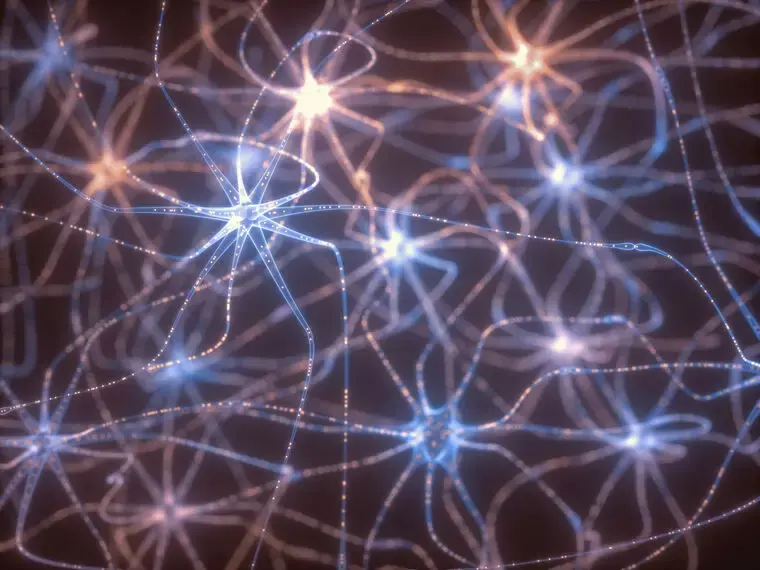Scientists from the University of Wisconsin–Madison have achieved a significant milestone in neurological research by developing the first 3D-printed brain tissue that mimics the growth and functionality of natural brain tissue.
The achievement holds promise for profound advancements in understanding the human brain and the treatment of various neurological and neurodevelopmental disorders, including Alzheimer’s and Parkinson’s diseases.
“This could be a hugely powerful model to help us understand how brain cells and parts of the brain communicate in humans,” Dr. Su-Chun Zhang, co-author and professor of neuroscience and neurology at UW–Madison’s Waisman Center, said in a press release. “It could change the way we look at stem cell biology, neuroscience, and the pathogenesis of many neurological and psychiatric disorders.”
The study results were recently published in the journal Cell Stem Cell.
The necessity for such an advancement stems from the limitations of current models in accurately replicating human neural networks. Animal models, while helpful, fall short of mimicking the complex information-processing capabilities of the human brain.
This discrepancy has led researchers to explore alternative methods, culminating in the development of 3D bioprinting technologies that allow for the precise construction of human neural tissues.
In their study, researchers used a commercial bioprinter to assemble tissues with defined human neural cell types, creating a cytoarchitecture that supports the differentiation of neurons and the formation of functional neural circuits.
This was accomplished by printing neuronal progenitors alongside astrocyte progenitors, which developed into mature neurons and astrocytes, forming neuron-astrocyte networks.
These networks exhibited calcium flux and glutamate uptake in response to neuronal excitation, showcasing their functionality under physiological and pathological conditions.
The bioink used in this process was a fibrin hydrogel, chosen for its biocompatibility with neural cells. This material supports the survival of printed cells, promotes their functional maturation, and maintains the structural integrity of the gel, ensuring the preservation of the designed tissue architecture.
A key innovation of this study was the horizontal deposition of layers, as opposed to the traditional vertical stacking. This approach not only facilitates the formation of functional connections within and between tissue layers but also makes the tissues compatible with conventional culture systems and suitable for live-cell imaging and electrophysiological recording.
The results of the researchers’ innovative approach were profound.
Within two to five weeks, printed tissues exhibited the formation of synapses essential for neural communication and functional neural circuits. The 3D-printed brain tissue also demonstrated evidence of spontaneous synaptic currents and responses to neuronal excitation.
Simply put, the cells in the 3D-printed brain tissue began to communicate with each other through neurotransmitters in the same way that organic brain tissues interact.
“The tissue still has enough structure to hold together, but it is soft enough to allow the neurons to grow into each other and start talking to each other,” Dr. Zhang explained.”
The inclusion of astrocytes, critical for maintaining the health and function of the neural network, also allowed the demonstration of neuron-astrocyte interactions through calcium signaling and neurotransmitter recycling.
Researchers further demonstrated their method by testing different combinations of 3D-printed brain tissues.
“We printed the cerebral cortex and the striatum, and what we found was quite striking,” Dr. Zhang said. “Even when we printed different cells belonging to different parts of the brain, they were still able to talk to each other in a very special and specific way.”
Researchers say the novel approach also offers a more precise and operational model of human neural networks than previously available.
“Because we can print the tissue by design, we can have a defined system to look at how our human brain network operates,” Dr. Zhang explained. “We can look very specifically at how the nerve cells talk to each other under certain conditions because we can print exactly what we want.”
The precision in the process allows scientists to scrutinize interactions between specific neural cell types and circuits under pathological conditions. This includes studying how healthy cells interact with neighboring tissues affected by neurodegenerative diseases.
This ability to replicate disease-specific phenotypes within this 3D-printed tissue underscores its potential as a powerful tool for drug discovery and personalized medicine.
The breakthrough in creating 3D-printed brain tissue could also signal a significant leap forward in our understanding of the human brain and a profound impact on the development of neurotechnologies.
In a previous op-ed with The Debrief, the head of the Galileo Project and founding director of Harvard University’s Black Hole Initiative, Dr. Avi Loeb, discussed how similar 3D bioprinting technologies coupled with artificial intelligence (AI) could potentially open the door for deep space exploration with self-replicating probes.
UW-Madison Researchers say their process does not require special bio-printing equipment, and the new technique should be widely accessible to most labs.
They say the next step is to further improve the bio-ink and overall process to allow for the specialization of specific cell orientations within 3D-printed brain tissues.
“Right now, our printer is a benchtop commercialized one,” co-author and research scientist at UW-Madison, Yuanwei Yan, said. “We can make some specialized improvements to help us print specific types of brain tissue on-demand.”
Tim McMillan is a retired law enforcement executive, investigative reporter and co-founder of The Debrief. His writing typically focuses on defense, national security, the Intelligence Community and topics related to psychology. You can follow Tim on Twitter: @LtTimMcMillan. Tim can be reached by email: tim@thedebrief.org or through encrypted email: LtTimMcMillan@protonmail.com

